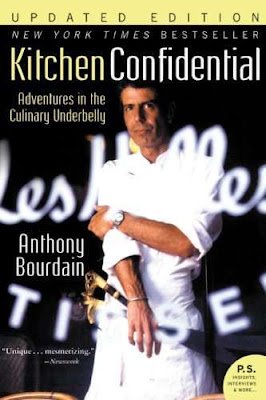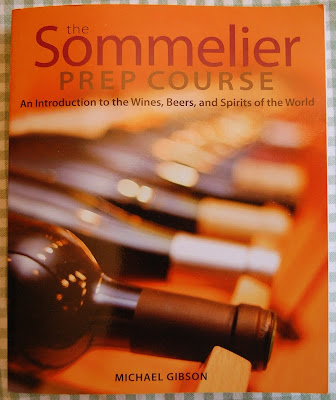
Most of this battered stack of paperbacks is about to become obsolete and I couldn't be happier.
Those are my old
Bloom County and
Outland books, collected over the years. Some at the time of publication, others purchased as used copies later on. While they were entertaining at the time and contained humorous extras like a copy of the fictional newspaper (
The Bloom Picayune) and the
Billy & the Boingers 45, these books were incomplete. Days and weeks were missing, entire plotlines were excised, and in the early ones, Sunday strips were printed in dull black and white. That has finally changed with the recent release of...
 Bloom County: The Complete Library, Volume 1
Bloom County: The Complete Library, Volume 1. This is one of those collections I thought would never happen, as
Berkeley Breathed had no desire to dig back through shoeboxes full of original drawings to piece together nine years of work. Fortunately a publisher was willing to do all the hard work on its own, even going back to old newspapers to collect missing strips where necessary.
This volume includes all of the strips from the debut in the winter of 1980 through the fall of 1982. If one only started reading the strip in the mid-80s, the early years may look unfamiliar. Milo Bloom and Steve Dallas were the only survivors from those early months, while a host of other interesting characters (The Major, Rabies the dog, Limekiller) disappeared as the artist honed his direction and allowed the characters to find their voices.
I started reading it around 1982 when I was six; it wasn't a soap opera strip like
Mary Worth or
Apartment 3-G, nor was it as confusingly political as
Doonesbury, but it was obvious that there were multiple layers of humor involved. And it was the only non-soap opera comic strip in the paper at the time that had long-running storylines that lasted weeks or even months. Such long-form writing was common in the golden age, but has been replaced almost entirely by one-off strips that require no knowledge of what happened yesterday, much less a year or more ago.

It's printed in hardback on full 8.5"x11" sheets with excellent detail, even a classy red ribbon for marking your place. (I don't necessarily want a ribbon in all of my books, but I appreciate it in archival works.) 3 strips per B&W page and the Sunday strips fill up an entire sheet. Commentary is sprinkled throughout the margins, either giving insight on the creation of a particular storyline or explaining a controversy.
Volume 2 is available for pre-order now, should be shipped in April 2010, with five total volumes planned in the series. I don't know if there's a similar plan for
Outland, but I had to include those books in my top photo for sentimental purposes.
Where am I going with all of this? Have I just gone off on one of my endless and usually pointless digressions on minutiae? Am I just trying to move a few books to make a little scratch for the holidays? Keep reading...
I've gotten a lot of e-mails from eager new winebloggers, and most of them petered out after a couple of weeks or months. I'm not at the top of this field, but I've been at it for a while and have had many successes and failures along the way. I've seen lots of examples of what works and what doesn't.
Ask most people about
Bloom County, and if they're even vaguely familiar with it they'll say, "Opus the penguin!" Indeed, Opus became the star of the strip and later migrated to
Outland, the Sunday-only project that ran for a few years, followed by his own eponymous strip,
Opus. But Opus didn't even show up in
Bloom County for six months, whereupon he was forgotten then reintroduced six months later. It was only with a a
strip joking about Hare Krishnas that the character became popular, and things took off from there. To be honest, Opus is barely in this book covering the first two years, and certainly not in his fully-formed charismatic version. Still, it would have been insane not to put that big-nosed penguin on the front cover.
Likewise, if you're starting a wine blog, you might not know what works right off the bat. I started out with long, boring laundry lists of stuff I tried at tastings, no photos. It's a wonder that anyone read it, but some did. After a while I noticed that those lists of 15 brief reviews got no comments, but when I'd spend the time with a single wine, that got attention. Or when I cooked something, or tried some bizarre wine or ingredient. Telling deeply personal stories was a big step for me. And pictures obviously helped a lot, even if you can see the odd dog poking a nose or tail into the frame (in my opinion that's a feature, not a bug).
If I'd drawn up a plan in late 2004 for the blog, stuck to it and marketed it as such, it would have been a colossal failure and I'd have given up. But instead I responded to my changing tastes, listened to criticism both positive and negative, and tried to spend more time reading other, bigger wine blogs. Am I huge and successful today? No, but I'd like to think that I have a fairly decent reputation, and a solid backlog of work that is purely my own. Just my words, my photos, my opinions. I have no idea where this will go in the future, but I'm proud of what I've accomplished and the work that I've put into it.
So for you, budding wineblogger, starry-eyed with visions full of Bordeaux and Champagne showing up at your house and offers for luxurious trips to Italy... all these things can be yours, but bear in mind it might be a long time before you even discover your penguin.
 The Initiates: A Comic Artist and a Wine Artisan Exchange Jobs
The Initiates: A Comic Artist and a Wine Artisan Exchange Jobs

































